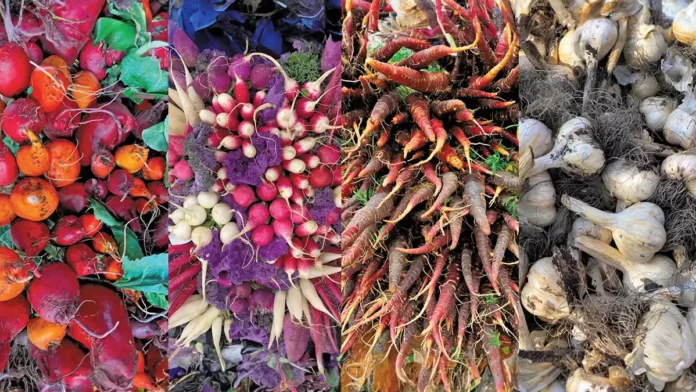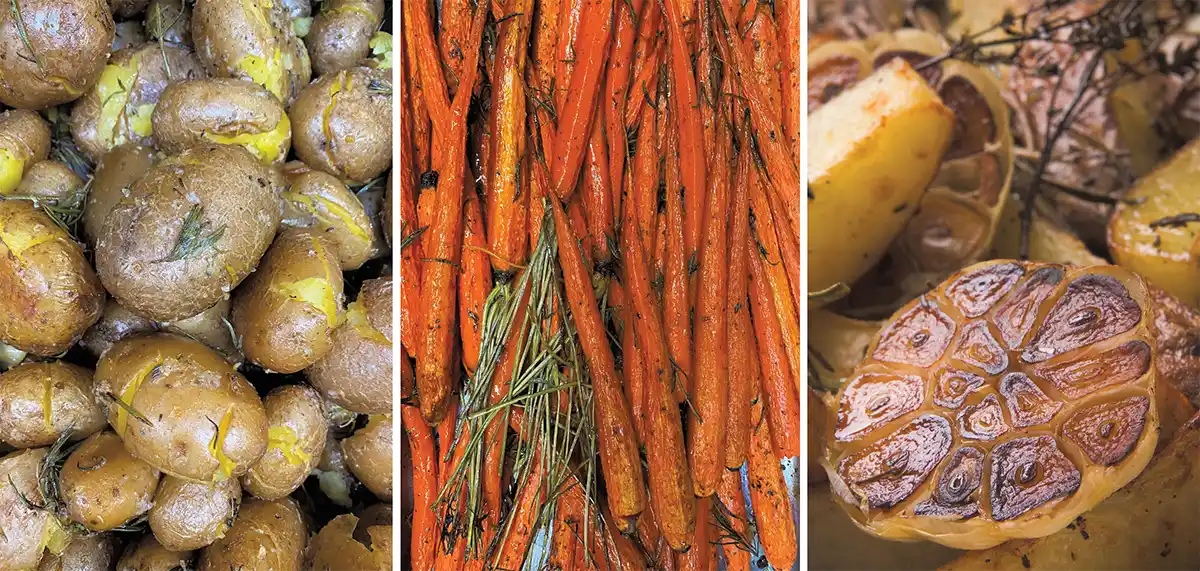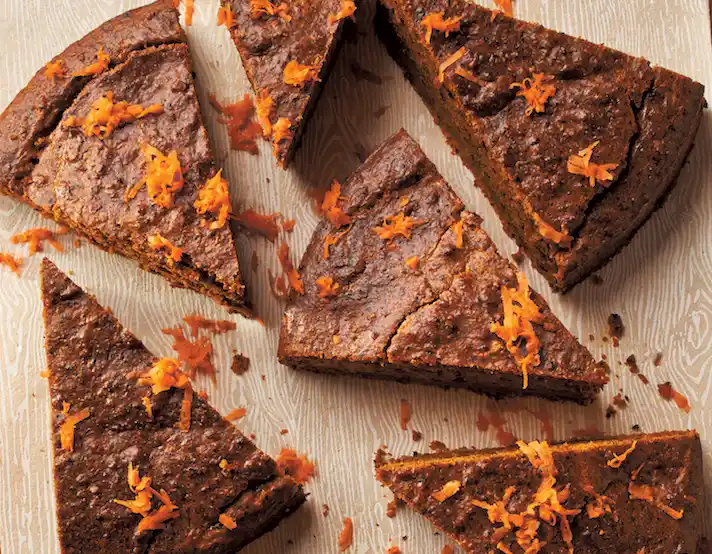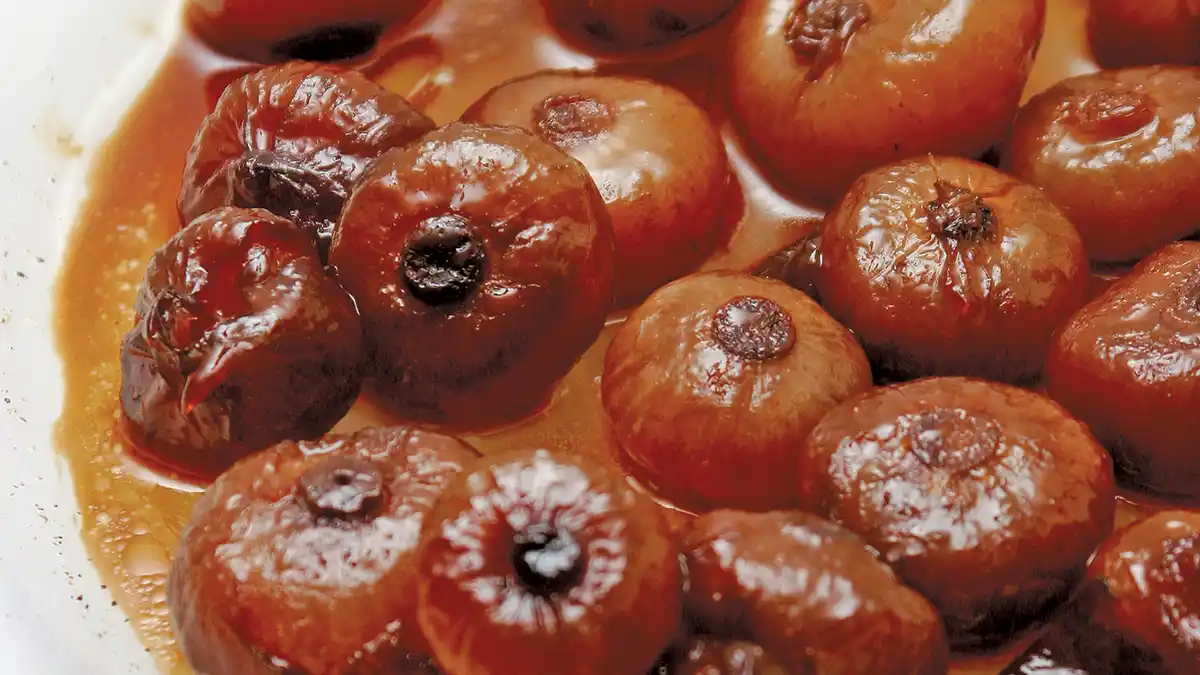
I feel as though I say it every month, but I can hardly believe it’s November! Though the leaves seem to fall from the trees later and later each year, we’re finally in the heart of the fall season, with Thanksgiving this week, so of course, it’s time to think about menu planning.
When it comes to Thanksgiving, though not a Greek holiday, I’ve really taken to loving it – sure, turkey is the main event at most tables, but the real stars are the side dishes… roasted carrots, glazed parsnips, mashed and/or smashed potatoes, sage-roasted beets, and of course sweet potatoes to name a few… there are too many options to list, but what strikes me is that those are made up, in large part, by root vegetables!
So, what makes root vegetables not only such a smart choice for our holiday tables, but for the colder seasons in general?
Laying Down Roots
Root vegetables, as they are collectively known, are a vast group of different vegetables, all of which grow underground. They can be further categorized by the way they grow and form in the earth – such as bulbs like garlic, onions, or fennel; rhizomes like turmeric, galangal, ginger, or lotus root; tuberous stems like the Jerusalem artichoke or potatoes; tap roots like carrots, parsnips, beets, turnips, radishes, and celeriac; or tuberous roots like yams, sweet potatoes, or cassava. This is just a small spread of the different kind of root vegetables that exist throughout the world, but what’s clear is that they are a substantial classification of vegetables.
Another important note about root vegetables is their shelf life – these relishable roots have the ability to be harvested and stored for months on end, giving rise to the ‘root cellar,’ which traditionally is a cold storage space kept above freezing, with high humidity. These conditions allow for the longest use of the previous season’s harvest during the cold winter months, when harvesting was difficult.
Ancient Root Vegetables
Though potatoes didn’t come to Europe until the 16th century, many root vegetables grew there naturally. In ancient Greece, carrots, beets, radishes, onions, and turnips were among the top ancient root crops harvested and enjoyed as part of their regular diet. They were eaten as soups, boiled or mashed, and seasoned with olive oil, vinegar, herbs, or garum, an ancient type of fish sauce.

Roasted root (L-R): roasted baby potatoes with rosemary; roasted carrots; and roasted head of garlic
According to Greek mythology, it was believed that beets were the actual roots of Aphrodite, goddess of love, pleasure and fertility; it was said that if two people ate from the same beet, they would fall in love. Other ancient lore implied that eating carrots and parsnips, both more phallic in shape, would lower inhibitions, while eating onions would provide strength, and so they were fed to the army of Alexander the Great.
My Roots
Given our family’s garden and farm, root vegetables were common ingredients in our home. As a young girl, during the colder months, while many of my siblings threw caution to the wind and dressed for the season before, I would dress in many layers because I hate being cold – my papou (grandfather in Greek) would always tell me that I dressed like an onion, because we both have many layers. Always with an eye on fashion, my sisters and I would boil beets to dye our clothes, as well as use them to stain our lips, as if we were wearing lipstick, and rub them on our nails to pretend like we had manicures.
My yiayia (grandmother in Greek) used to love the colder months for the bounty of root vegetables we harvested and consumed at home – she felt that their starchy nature was the perfect canvas for all different kinds of flavors. She would take the beets we boiled for our dye and use them to make an earthy yet tangy beet and yogurt dip, to which she added feta and fresh garlic, which we would all gobble up with her homemade pita bread. She would make Patates Kokkinistes, or ‘Red Potatoes’ – a simple dish of boiled and stewed potatoes with onion, garlic, Kyknos tomato paste, and cinnamon that warmed our hearts and stomachs alike. She also loved Patzaria Sto Fourno, ‘Roasted Beets’ that she would cook over salt, with vinegar, and serve with heads of roasted garlic. She roasted carrots glazed in honey, and topped them with fresh herbs and manouri cheese (a mild, creamy and crumbly sheep milk cheese), and braised onions with a little bit of vinegar, olive oil, and water to create these luscious, delectable, sweet layered treats you could’ve mistaken for a savory
dessert.
My papou, on the other hand, was full of wisdom, like the modern-day Hippocrates he was! He used to tell my siblings and I that we had to eat our carrots, because the inside looks like an eye, and so they would make our eyes strong and healthy. He would say that the bad breath onions and garlic gave us wasn’t actually from the vegetables, but rather clearing our body of toxins we released, and so the worse our breath, the more it was working. We all responded by blowing at him like we were blowing out candles, and he would laugh and tell us what a good job we were doing cleaning our bodies!

Healthy Roots
When it comes to root vegetables, with such a breath of different species, it’s hard to pinpoint exactly how good they all for us – but rest assured, they are!
In general, root vegetables are a good source of potassium, folate, fiber, vitamins A, B, and C, manganese, and complex carbohydrates, and antioxidants which can lower the risk of heart disease and different kinds of cancer.
Potatoes, in particular, tend to get a bad reputation in this day and age of carbohydrate avoidance, but a single baked potato has twice the amount of potassium than a banana, and is only 164 calories! The lesson here is that it’s more about how you prepare the potato, and not the potato itself.
Time to Take Root
Yiayia was right – root vegetables are a perfect canvas for the kitchen – they can be the featured dish, or play a supporting role during the holiday season.
Don’t be shy when it comes to sweet potatoes – roast them with some olive oil, cinnamon, honey and tarragon (which brings out the sweetness), and then after mashing them, zest a little citrus in there to perk them up and give that warmth some brightness to balance.
Salt-baked beets provide the ideal salinity to the humble root, served with a light vinaigrette and some crispy sage to bring their earthy sweetness to the forefront. Parsnips and turnips glazed with an oximeli (literally translates to ‘sour honey’, but really is the Greek version of an agrodolce) allows the sweet and mildly spicy nature of the vegetables to shine. Or, shaved beets with arugula and cheese make an amazing earthy salad side, when dressed with some lemon and olive oil.
Roasted lemon potatoes are the quintessential Greek side dish, with the gorgeous caramelization and crispiness from the drop of tomato paste on the outside, and the bright flavor of the lemon pairing perfectly with the creamy, fluffy potato flesh, and a sprinkle of dry Greek oregano to add a little herbaceous kick. Roasted carrots paired with a savory carrot top pesto and some feta cheese bring a craveable familiarity to the table, as well as textural intrigue.

Braised Cipollini Onions
Red-wine braised cipollini onions are particularly eye-catching with the deep ruby-hued glaze and a succulent sweet-yet-savory flavor and velvety texture to match, while Jerusalem artichokes add a beautiful crunch to any salad, especially when marinated or pickled ahead of time with some vinegar, garlic and mustard seed.
And let’s not forget about dessert – a classic sweet potato pie can be elevated by nuts, herbs, and spices, so it teeters the line of dessert or side dish. A classic carrot cake can be turned on its head by the inclusion of parsnips and Greek yogurt for ‘frosting’ – you won’t believe how good it is…
Root Words
With root vegetables, the flavor and texture combinations are endless, so no matter your culinary style or preference, there’s something for everyone! Have a happy and healthy Thanksgiving, let’s all be thankful for our roots, and our root vegetables.























